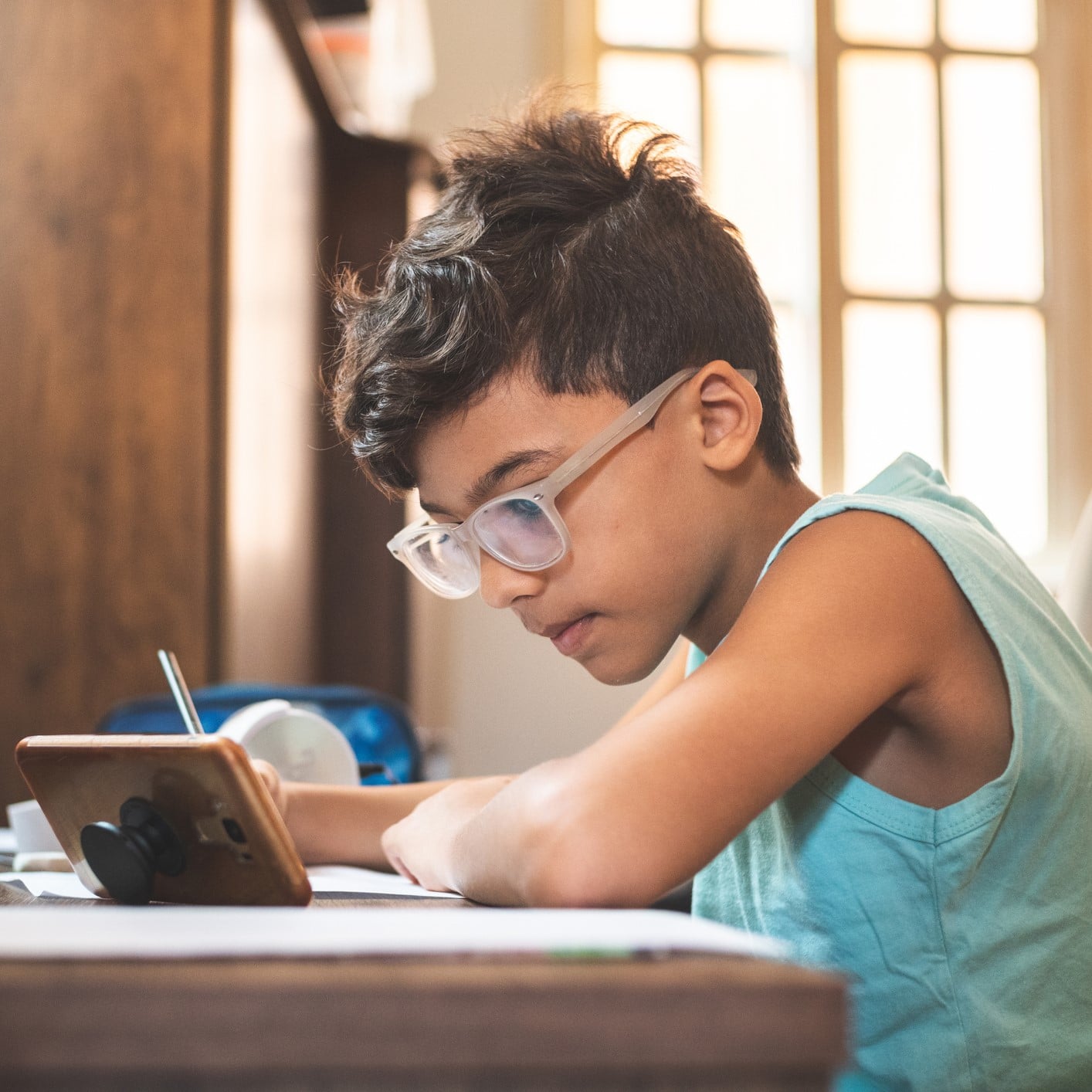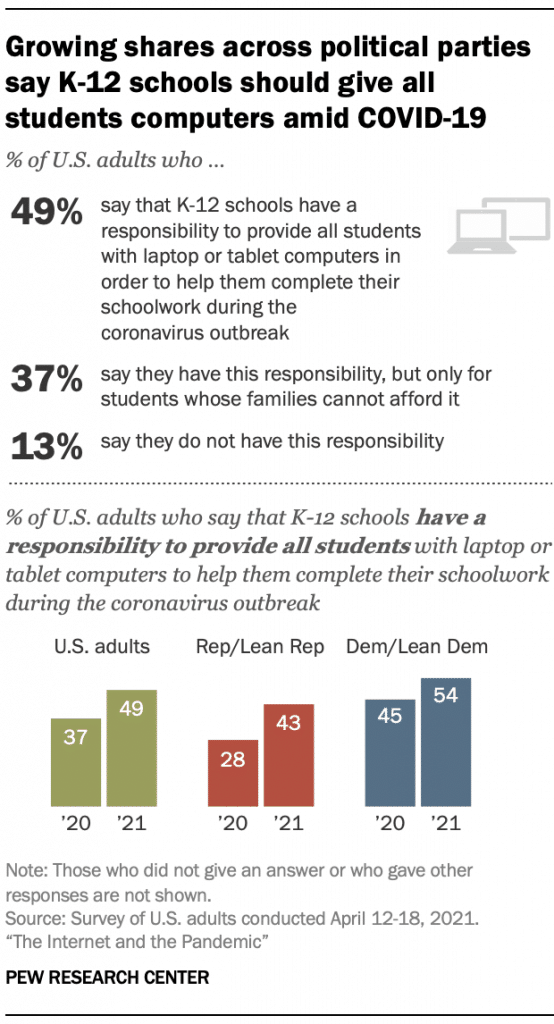The vast majority of parents with K-12 children (93%) say their children had some online instruction during the COVID-19 pandemic, according to new homework gap research from Pew Research. And while 70% of those parents said it has been very or somewhat easy to help their children use technology for online instruction, lower-income families were more likely to experience tech-related issues.
For example, 37% of lower-income parents said their children had to do at least some schoolwork on a cellphone during the pandemic, compared with 24% of middle-income parents and 16% of upper income parents.
One quarter of lower-income parents said their children were not able to complete at least some schoolwork because they did not have access to a computer at home, compared with 15% of middle-income parents and 2% of upper income parents.
And while 23% of lower-income parents said children at least sometimes had to use public Wi-Fi to finish their homework, only 11% of middle-income and 4% of upper income parents experienced that.
Homework Gap Research
The increased importance of connectivity in education has impacted attitudes toward digital policy as well, the Pew homework gap research found.
Nearly half of U.S. adults (49%) say K-12 schools have a responsibility to provide all students with laptop or tablet computers to help them complete their schoolwork during the Coronavirus outbreak, compared with 37% who said that in a 2020 Pew survey.
Another 37% of respondents in the 2021 homework gap research say schools have this responsibility, but only for students whose families cannot afford the devices. Only 13% of respondents said schools do not have this responsibility.
Attitude changes were observed among Republican and Republican-leaning adults, as well as Democratic and Democratic-leaning adults.
While 28% of Republican and Republican-leaning adults in 2020 said that schools have the responsibility to provide computers or tablets, that number rose to 43% in 2021. Among Democratic and Democratic-leaning respondents, that percentage rose from 45% in 2020 to 54% in 2021.
The government already has taken steps to make computers available to schoolchildren during the pandemic. The Emergency Connectivity Fund has a budget of $7.17 billion that can go toward computing devices and broadband connectivity for schoolchildren and library patrons. Local schools and libraries will administer the program.




